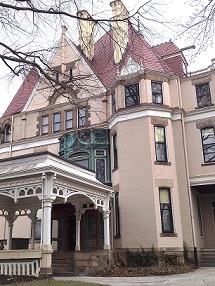
Stationed on Fifth Avenue in Pittsburgh, also regarded as “Millionaires’ Row,” is the picturesque Victorian-designed Clayton mansion, home to the Fricks, one of the wealthiest families in the 19th century. Lined with mansions built by some of the most affluent families in the world, including the Carnegies, Mellons, Westinghouses, and the Fricks, “Millionaires’ Row” was a section secluded from the soot-filled city of Pittsburgh. Surrounded by exquisitely landscaped gardens and a beautiful view of the entire 5.5 acres of the estate, Clayton is one of the only houses in the area still standing today. An “F” for Frick is elegantly engraved into each exterior doorknob, while the interior walls of the four-story mansion are full of family secrets and treasures. It is said that each room has its own story to tell, bringing over 100,000 visitors back each year. Today, the Clayton is part of the Frick Art and Historical Center that also includes the Frick Art Museum, the Car and Carriage Museum, and the Frick Café on the property. People from all over tour the Frick Art and Historical Center to learn about one of the most mysterious and prosperous families, to experience what life was like in the Gilded Age, and to view one of Pittsburgh’s oldest treasures.
This treasure of art and history would not exist but for the financial drive of tycoon Henry Clay Frick. Frick assumed multiple roles during his lifetime as an industrialist, financer, art patron, father, and husband. Recognized for his unsurpassable business skills and unwavering confidence, he single-handedly paved the way for the creation of the United States Steel Corporation.
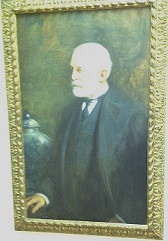
Remarkably, Frick received very little education growing up, but while working for his grandfather as a bookkeeper at 19, Frick became interested in the process of “coking” coal. Coking coal, burning off its impurities, made the increasingly important production of steel possible. With the help of a few Pittsburgh relatives and a friend, Frick formed H.C. Frick and Company, which soon became the largest producer of coke in the world. The keen industrialist was a millionaire by the age of 30. Author Quentin R. Skrabec, Jr. quoted financier Charles Schwab in his book, Henry Clay Frick: The Life of the Perfect Capitalist: “No man on earth could get close to him or fathom him. He seemed more like a machine, without emotion or impulses. Absolutely cold-blooded.”
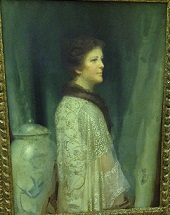
Henry Frick married Adelaide Howard Childs on December 15, 1881. Henry and Adelaide had four children, Childs, Martha, Helen, and Henry, Jr., but both Martha and Henry, Jr. died at an early age. The couple purchased a home in Pittsburgh, also known as Homewood, in 1882, eventually renaming it Clayton after a yearlong renovation process and the addition of eleven rooms. The family resided at Clayton until 1905, when they moved to New York City. “Wealthy people in the 19th century often named their estates to gain extra publicity,” explained Phil Weber, a docent at the Frick Art and Historical Center.
Frick met Andrew Carnegie, President of Carnegie Brothers Steel, the same year the Fricks moved into Clayton. Intrigued by Henry’s financial abilities and coke-making business, Carnegie asked Frick to be his partner in 1889. Frick served as a major asset to the business’s success, which soon became the largest steel company in the world. Henry Frick quickly became a renowned and respected figure, but his prestigious image, career, and relationship with Carnegie was ruined when his actions during the Homestead Strike in 1892 resulted in 10 deaths and 60 wounded. Frick was blamed for provoking the violence and various other union groups began targeting him. A fellow “Frick-hater,” Alexander Berkman, attempted to assassinate Frick after the strike in order to seek revenge. Miraculously, Frick survived after he was shot twice and stabbed multiple times. The strike also stirred up tensions between Frick and Carnegie, leading them to split up after continued conflicts over control of Carnegie Steel Company. Although Carnegie Steel became the United States Steel Company in 1901 with the help of Frick, Americans still shunned the audacious industrialist and he was referred to as “the most hated man in America.” Despite his keen business skills and major contributions to the steel industry, Henry Clay Frick is predominantly remembered for his ruthless actions during the Homestead Strike. Quentin R. Skrabec Jr., author of the book Henry Clay Frick: The Life of the Perfect Capitalist, remarked:
After Homestead, the unions looked upon him as a murderer and even a monster. Often Frick’s charity, philanthropy, and achievements were footnoted by his involvement at the Homestead by the press.
Frick always had a passion for the arts and when he retired from the steel business, he focused on collecting art and also ventured into the real estate and railroad businesses. Just before his 70th birthday, he donated five-sixths of his $50 million fortune for philanthropic purposes and then died soon after of a heart attack on December 2, 1919.
Helen Frick, his youngest daughter, “inherited $38 million, more than $404 million in today’s dollars, making her the richest unmarried woman in America,” reported writer Christopher Gray in The New York Times. Helen never married and like her father, was very intelligent and driven. “Helen was her own woman. It was her way or no way,” Liz Radis, assistant curator of Frick Art Museum explained.
After the Homestead Strike, Helen and her family experienced a great deal of turmoil, hatred, and grief until her father’s death, prompting Helen to dedicate her life to honoring her father, vindicating his name, and publicizing his positive achievements. “Helen considered her father a hero in every way, and while history might dispute that belief, her lifelong quest to honor him led her to heroic heights of her own,” asserted art critic Ellen S. Wilson in the Pittsburgh Post-Gazette. Martha Frick Symington Sanger, great-granddaughter of Henry Clay Frick, expressed in her book Helen Clay Frick: Bittersweet Heiress:
Helen was a single woman at a time when single women were viewed as Bolsheviks or as lesbians. Bolsheviks are people who destroy the natural order of things, and the natural order for women was to marry and have babies. She stood up against the male chauvinism of her time.
Even though Helen’s family moved to New York City in 1905, she chose to focus her efforts in Pittsburgh because she always secretly preferred her hometown. Radis remarked, “Helen even trained her dog to play dead when she said ‘New York’ because she loved Pittsburgh so much and considered it her only real home.” Helen focused her commemorations of her father in Pittsburgh because Henry first began collecting art when they lived at Clayton. A majority of working-class families in western Pennsylvania still remembered Henry Frick as the “robber baron,” so she sought to reconstruct the image of her father in their eyes as being an unselfish philanthropist and lovable father. “She was ridiculed for being in love with her father,” biographer Sanger explains.She was just three years old when her older sister, Martha, died at the age of six. The family mourned greatly after this tragedy and profound remembrance was always fundamental to the Frick family as Helen matured. This led her to continue the same remembrance for her father.
Helen became interested in art through her father as a teen. “Helen Frick always had loved art. Her father was her earliest teacher; he filled his several homes with many paintings,” writer Barbara Hollenbaugh wrote in the Tribune Review in 2007. This determined woman’s first efforts to carry out her father’s tradition was establishing and financially supporting the Fine Arts Department at the University of Pittsburgh in 1926. After years of deliberation and construction, the Fine Arts Building was completed and opened to the public in 1965, but serious conflict continued to arise between Helen and the University.
Both parties had different intentions and ideas for the building’s use, and even though Helen was donating $135,000 per year on top of the $3.5 million she contributed to the construction of the building, the University found her too hard to please and overly controlling. In 1997, Ray Anne Lockard, art liaison librarian from the University of Pittsburgh, wrote in the journal article, “Helen Clay Frick: Pittsburgh’s Altruist and Gentlewoman Avenger”:
She also expected, however, to have proprietary and semi-autonomous control over the operation of the building, the people who used it, the courses that were taught there, and exhibitions shown in the gallery. She would not tolerate Germans on the faculty, only art classes could meet in the building, and no modem or contemporary art could be shown in the gallery.
Tired of Helen’s domineering attitude, the University of Pittsburgh asked Frick to withdraw her financial support and art collection in 1967. “We were given to understand that we must soft-pedal, if not ignore or eliminate outright, contemporary art. It was either this or lose the department,” Dr. William C. Loerke, head of the art department, told The New York Times in 1967. Dr. Loerke elaborated, “Miss Frick said she was sorry that there had been such a misunderstanding and that her collection was not appreciated.”
Hurt by the University’s unappreciative actions, yet still determined to uphold her father’s name, Helen moved her and her father’s art collection to the Clayton property and decided to open an art museum of her own. She handpicked everything in the Italian Renaissance themed museum, from each piece of art to the floor tiles. “Her taste in art was for the traditional, and she scorned contemporary and abstract art as ‘neither beautiful or educational,’” explained ophthalmologist Dr. E. Kenneth Vey to the Pittsburgh Post-Gazette in 2006.
Helen died at the age of 96 in 1984 and left an endowment to restore her family’s home and to turn the property into the Frick Art and Historical Center. She left behind detailed instructions for the renovation process of Clayton and the rest of the Frick and Art Historical Center to ensure her family name and history would never be forgotten.
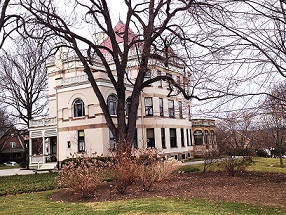
After a 4-year, $6 million renovation project, the Frick Art and Historical Center opened to the public in 1990. The Frick Café was added to the property in 1994, followed by the expansion of the Carriage Museum into the Car and Carriage Museum in 1997. Today, the Frick Art and Historical Center offers extensive tours of the mansion, while the Frick Art Museum, Car and Carriage Museum, and Frick Café are open for walk-throughs.
As the tour of Clayton begins, the first sight that draws attention is the gallery-style of pictures that cover the crème-tinted walls of the mansion. Overlaying pieces of art was popular in the 19th century due to a “fear of empty space.” Entering the reception room, docent Phil Weber observed, “Each of these paintings you see throughout the house average about $4,500, and note that most average workers at this time were making just $500 to $600 a year.”
The reception room is one of the more ornate rooms in the mansion because it was where guests were welcomed; it was the place for the Fricks to show off their wealth. The ceiling, made of aluminum, a luxury worth more than gold at the time, compliments the sophisticated nature of the room. A large portrait of Helen is exhibited on the wall, along with her father’s first painting. “Calling cards were available for guests in this room, but if Heinz or another higher-class individual arrived, they would not need to use a calling card,” Weber explained to the tour group.
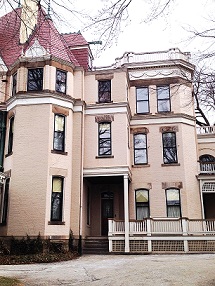
Left of the reception room is the parlor, which was also designed to make a statement about the family’s fortune. Aluminum covers the ceiling and the walls are covered with red silk wallpaper, stained with soot from the high volume of pollution in Pittsburgh back in the 1900s. The quaint room also includes a piano that was used to entertain the guests, and a gas fireplace. “The Fricks had telephones and electricity before anyone else, even the White House! Other homes were still using coal,” laughed Weber. Chairs in the parlor and throughout the rest of the house were designed noticeably low to the ground so that women in skirts did not show their legs when sitting.
Interlaced, Irish wood patterns adorn the dining room ceiling, along with wooden chairs from Scotland, carved with intricate thistle flowers. The fixtures in this room and various other rooms in the mansion were both gas and electric, since electricity was new and unreliable. Luncheons were hosted in the dining room, including the one held for Theodore Roosevelt in 1902. Only men were invited to this event since women could not vote at the time.
Connected to the dining room is the kitchen, which contained an annunciator panel on the wall so that each room could ring for the servant. Mary Coyne, an Irish immigrant, was the Fricks’ primary housekeeper and resided in the Clayton. The Frick’s chef, on the other hand, lived a few blocks down the street with his family. The breakfast room can be accessed through the kitchen and this room is where weekly poker games with the neighborhood men were held. The casual neighborhood men only included Henry J. Heinz, Andrew Mellon, George Westinghouse, and other fellow millionaires. Though Heinz did not gamble or drink, he would often come to watch. Helen enjoyed taking part in her father’s poker events, passing around the ashtrays and poker chips.
As tourists approach the second floor, they will notice that Frick and his wife, Adelaide, had separate bedrooms. “Wealthy men in the 1900s often had their own room for status purposes,” Weber explained. Henry’s twin-size bed still appears in Clayton and is the same bed in which he recovered from the assassination attempt. Weber remarked: “Contrary to today, hospitals during this time period were very unsanitary, so most patients were sent home after surgery to recover.” Henry developed an infection while recovering that almost took his life, and during this time, he claimed to have hallucinations of his dead daughter Martha. Portraits of Martha cover Henry’s bedroom walls; it was common to mourn through pictures and sculptures. It is also noted that Frick was one of the first to have an in-home shower.
Adelaide’s room, with its own balcony, is connected to Helen’s room, which has three twin-sized beds in a row. One bed was Helen’s, one was for her governess, and the other was for her two dolls, Shepard and Shepardist. On the wall next to Helen’s dresser appears a weight and height chart that Adelaide used every morning, since she was exceptionally concerned about her children’s health after losing two children.
When gazing up while ascending to the third floor, one can note the ceiling has a fake skylight impression, leading people to believe there is no fourth floor at Clayton. The Frick library and study room can be found on the third floor, and these rooms are where Henry would discuss his art with company and read after dinner.
The last room open to visitors on the tour of Clayton is the Blue Room, also known as the guest room. This room, hand-designed by the Matthews Brothers of Wisconsin, is where Theodore Roosevelt napped after his 1902 luncheon. It received its name from the blue hue of the room’s decor.
Henry had a playhouse built for the children next to the mansion in 1897. Still standing today, it has a bowling alley inside. Son Childs was also the captain of the cadets in school and they would often hold practices upstairs in the playhouse.
Helen had the first Carriage Museum built in 1959, but in 1997, the Frick Art and Historical Center expanded it. Today, at the Car and Carriage Museum, visitors have the opportunity to see some of America’s finest carriages and witness how the Fricks traveled from place to place. Altogether, the Fricks owned 30 carriages, varying in type for different occasions and seasons, and each engraved with the Frick family crest.
Henry Frick purchased his first carriage, averaging about $1,450, in 1880 and his last in 1909. “He bought this last carriage, even though he owned a car at this point. Unbelievable huh?” exclaimed Tom Colcombe, assistant curator of the Frick Car and Carriage Museum. Frick purchased the last carriage to make a gallant appearance at the New York Central Parade in 1910. This parade resembled a car show in today’s society and gave rich people the opportunity to show off their wealth by parading around in the newest, most expensive carriages. It was common for the owner of the carriage to drive, while the coachmen would sit in back as security. “The Four-Spring Tuxedo Spider Phaeton was Henry’s sports car,” explained Colcombe. This carriage was known for going a little faster than the others; Henry would often drive it by himself to his railroad car that he would take to work. The Four-Spring Basket Phaeton, Helen’s favorite carriage, is also on display at the Carriage and Car Museum. This carriage was designed for women; it was low to the ground so they did not have to lift their legs to climb in with their skirts and light-colored so it would not soil the ladies’ “summer whites.”
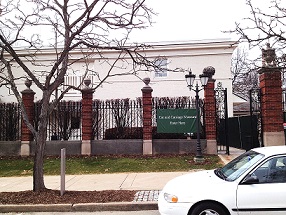
Not only does curiosity about the Fricks’ lavish lifestyle bring visitors back each year, but also the ceaseless exhibits and events the Frick Art and Historical Center offers. One of the most famous exhibits, “Clayton Days,” was shown in the Frick Art Museum in 1999. At first, the owners of the museum were hesitant to sponsor exhibit creator Vik Muniz, because the museum was created to conserve the Frick history and art collection that contained work from the 13th to 18th centuries. The museum ended up taking the risk in order to add a contemporary edge to the institution and they were extremely successful. “Clayton Days” was so effective because Muniz brought out the little, everyday aspects of the Fricks’ lives, creating a visual history for the audience. Muniz told the Pittsburgh Post-Gazette:
What holds the image of the world together? The world we cannot understand because it happens all of the time when we’re not looking, where we’re not looking. It just happens. We look at what we’re told is important. Things must have happened at Clayton. Children must have blown bubbles, discovered a dead snake, cookies were baked, a doctor visited.
During the holiday season at the Frick Art and Historical Center, some of the unique activities offered include Victorian ornament and card making, along with a separate adult tour that offers champagne, desserts, and music in the parlor of the mansion. Clayton is also decorated for the holiday season, exhibiting popular tastes of the 19th century. The Frick Art and Historical Center seeks to target guests of all age groups with their various events throughout the year.
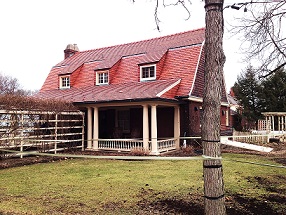
A few setbacks have occurred recently, including arguments between Frick family members over whether to keep Henry Frick’s diaries, journals from European trips, business papers, receipts of art purchases, family letters, and architectural drawings in the Frick Art Museum located in Pittsburgh to respect Helen’s wishes or to move the archives to the Frick Collection Museum in New York City. Besides these recent obstacles, The Frick Art and Historical Center has ample plans for the future, which includes a $15 million renovation and expansion project that will be completed in 2015. The project includes the addition of a new orientation center, education center, and a community center, as well as an expansion of the children’s exhibitions, storage facilities, and artwork selection. Bill Bodine, executive director of the Frick Art and Historical Center, told the Pittsburgh Post-Gazette in 2006:
The goal is to draw more connections among Clayton, the Victorian home of the Frick family, the Car and Carriage Museum and the art museum, so visitors can glean a better understanding of the Fricks, the era in which they lived and what their possessions say about them and the Gilded Age. A visitors’ center that orients newcomers to the site will accomplish some of those goals.
The Frick Art and Historical Center ultimately symbolizes the dedication a young girl had to vindicating her father’s name. After years of experiencing countless setbacks, Helen Clay Frick’s efforts have received tremendous admiration and most importantly, have been successful. The Fricks are an essential element of Pittsburgh’s unique history, due to their exceptional wealth, prominence in the area, and Henry Frick’s dedication to the U.S. Steel Corporation. Visitors come from far and wide to witness first-hand how one of the wealthiest families lived in the 19th century.
The Center would like to thank the Frick Museum for assisting with this article.
Sources:
- Bourgoin, Suzan M. “Henry Clay Frick.” Encyclopedia of World Biography. 2nd ed. 2004. 108-09.
- Colcombe, Tom. Personal interview. 23 February 2014.
- “History in the Remaking the Frick Center Renovation Deserves Support.” Pittsburgh Post-Gazette 31 May 2013, sooner ed.: B-6.
- Leonard, Kim. “Henry Clay Frick ‘respected and hated’.” Pittsburgh Tribune Review 16 Dec. 2007.
- Lockard, Ray A. “Helen Clay Frick: Pittsburgh’s Altruist and Gentlewoman Avenger.” Art Documentation: Journal of the Art Libraries Society of North America 16.2 (1997): 9-14.
- Pitz, MaryLynne. “Family Connections-The Frick Stresses Relationship Between Mansion, Motorcars, and Art.” Pittsburgh Post-Gazette 29 Jan. 2006: F-5.
- Pitz, MaryLynne. “Frick Family Feud.” Pittsburgh Post Gazette 27 May 2001, five star ed.: G-1.
- Pitz, MaryLynne. "Welcome to The Frick: New Orientation Center opens." Pittsburgh Post Gazette. 16 July 2014. 31 October 2014. <http://www.post-gazette.com/ae/art-architecture/2014/07/16/Welcome-to-The-Frick-New-Orientation-Center-opens/stories/201407130002>.
- Radis, Liz. Personal interview. 23 February 2014.
- Sanger, Martha Frick Symington. Helen Clay Frick: Bittersweet Heiress. Pittsburgh: University of Pittsburgh Press, 2007. 116-27.
- Skrabec, Jr., Quentin R. Henry Clay Frick: The Life of the Perfect Capitalist. Jefferson, NC: McFarland & Company, Inc., 2010. 247-48.
- Thomas, Mary. “The Power of an Image; Photographer who Created ‘Clayton Days’ Exhibit Uses Art to Overturn Preconceptions.” Pittsburgh Post-Gazette 16 Oct. 2013, sooner ed.: C-1.
- “U. Of Pittsburgh Cuts Frick Ties: Cites Dispute Over Art With School’s Chief Benefactor.” The New York Times 9 Feb. 1967: 41.
- Vey, Kenneth E. “Helen Clay Frick.” Pittsburgh Post-Gazette 26 Sept. 2006, sooner ed.: E-7.
- Weber, Phil. Personal interview. 23 February 2014.
- Williams, Candy. “The Frick Entertains Guests with ‘Victorian Christmas’.” Pittsburgh Tribune Review 2 Dec. 2004.
- Wilson, Ellen S. “A Personal Take on Helen: Henry Frick’s Daughter Bore the Burden of His Grief and Wealth.” Pittsburgh Post-Gazette 25 Nov. 2007, five star ed.: E-6.
